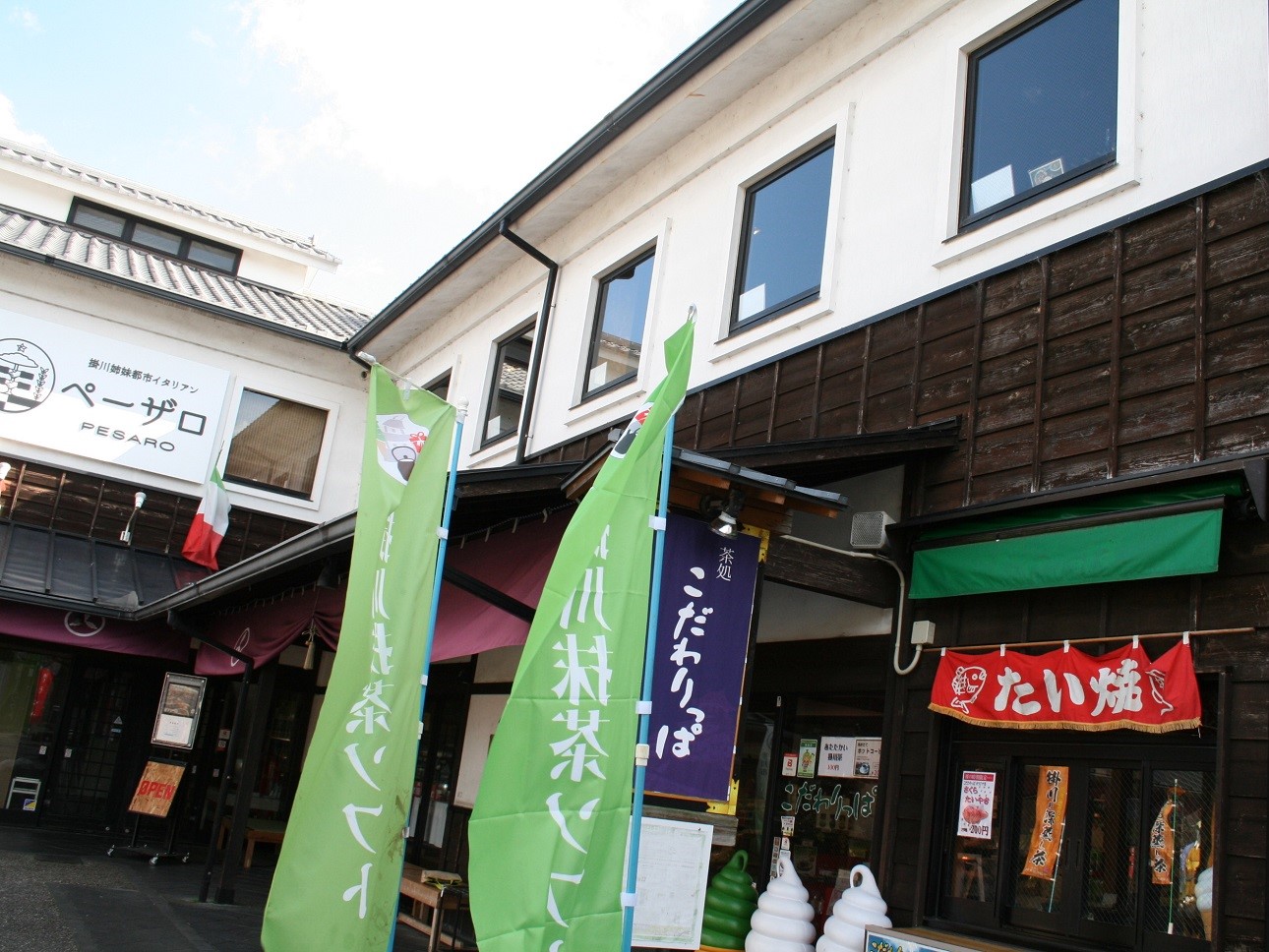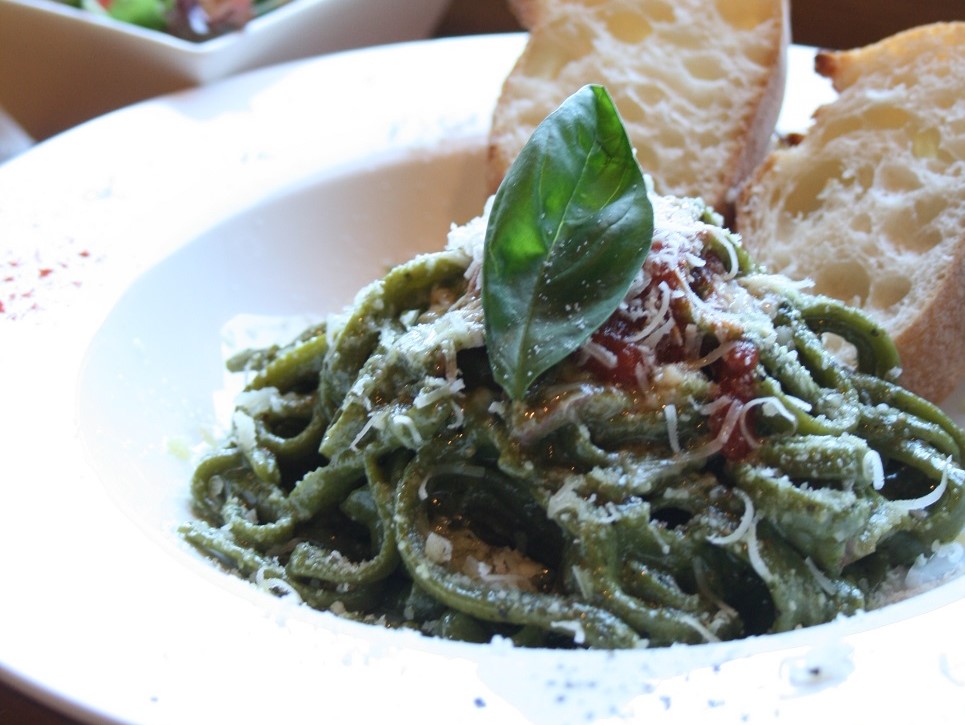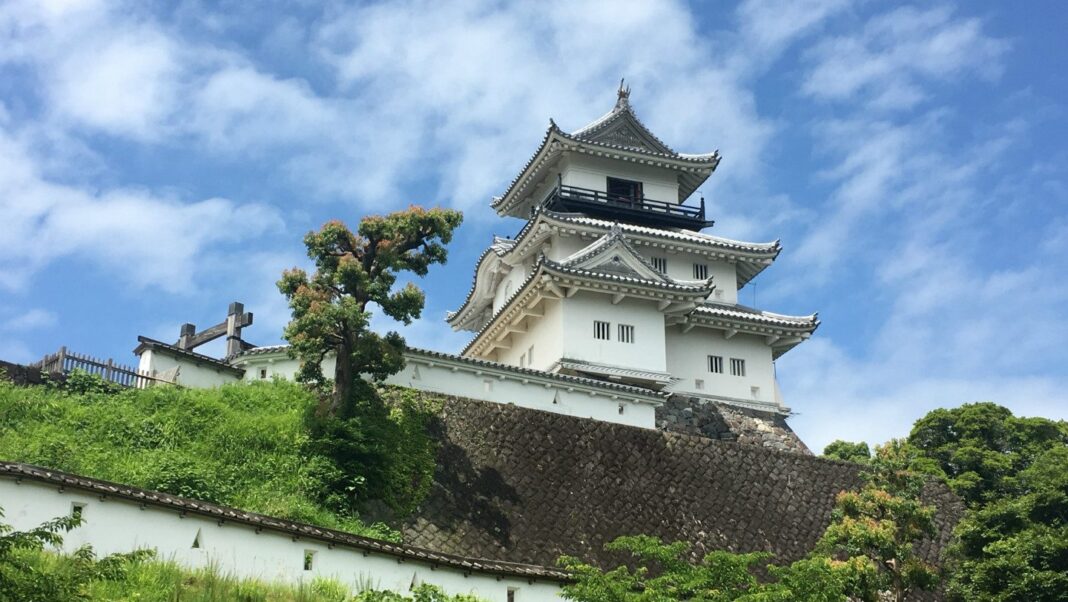Table of Contents
Kakegawa Castle, certified as one of Japan’s 100 Finest Castles
Get off at the north exit of JR Kakegawa Station and head straight north. As you continue to walk along the white and Namako walls of the stores facing the street and start feeling the distinct atmosphere of the castle town, you will arrive at Kakegawa Castle in about five minutes. Kakegawa Castle was restored in 1994 as Japan’s first full-scale wooden castle tower, retaining its original beauty that made it one of the best castles in the Tokai region. Before we climb up to the castle tower, let us introduce its history.
Get to know its history!
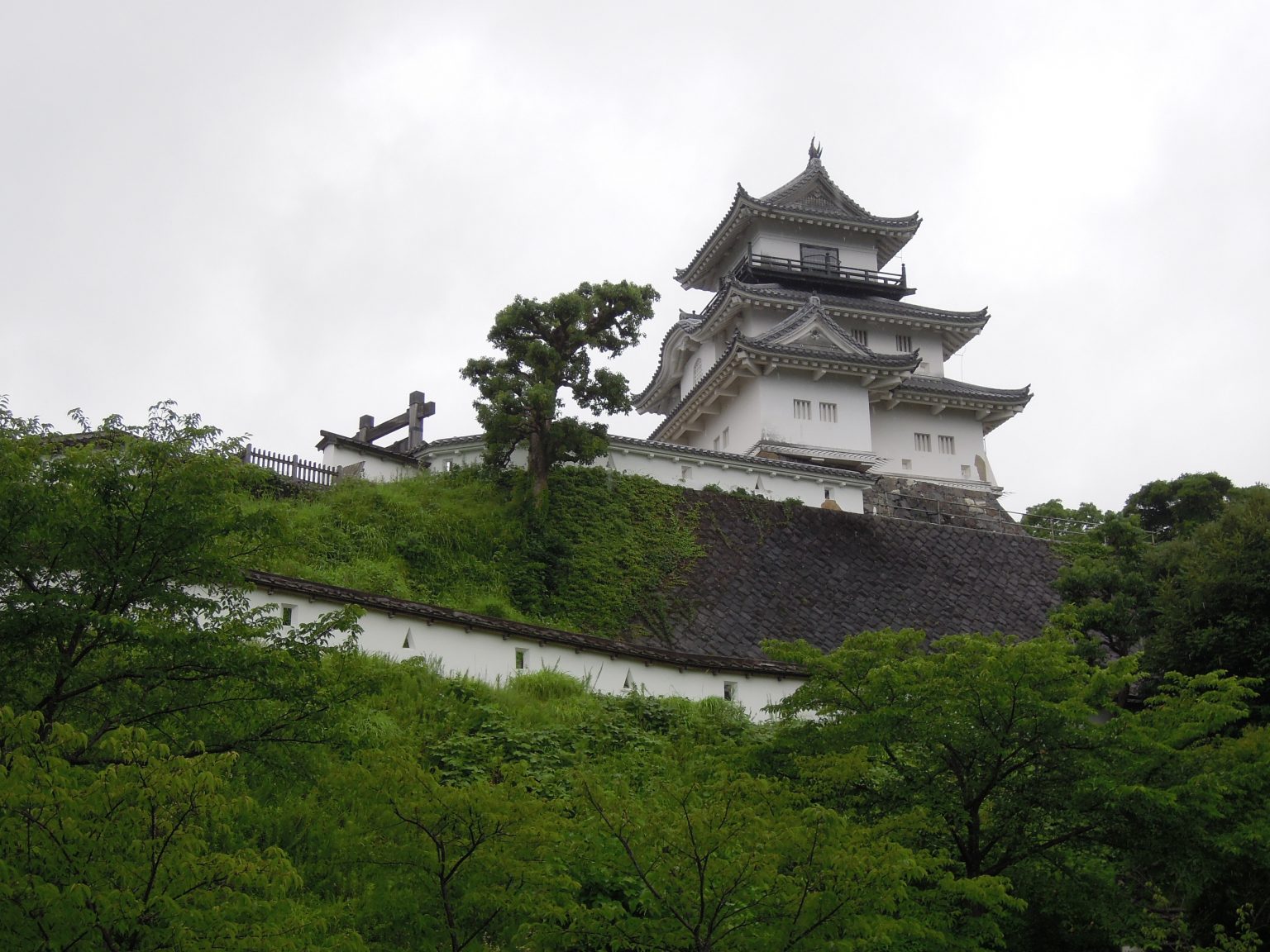
It is said that during the Sengoku period (1489-1501), the Imagawa clan, which ruled over Suruga Province, expanded their power in this region and ordered the construction of Kakegawa Castle as a base to control Totomi Province.
The castle was originally built in 1513 under the orders of the Asahina clan, who were vassals of the Imagawa clan.
Later, however, in 1560, Imagawa Yoshimoto was defeated by Oda Nobunaga in the Battle of Okehazama. It is said that Yoshimoto’s son Ushizane was holed up inside Kakegawa Castle after being pursued by the rival Takeda clan, but Tokugawa Ieyasu took advantage of the turmoil and attacked, successfully taking possession of the castle.
As power shifted from Oda Nobunaga to Toyotomi Hideyoshi, Hideyoshi, who had successfully unified the country, transferred Ieyasu to the Kanto region and assigned his former territory to the feudal lords under his rule.
Kazutoyo Yamanouchi then moved into Kakegawa Castle, expanded it, and rebuilt the castle grounds. It took five years from 1592 for the first castle tower to be built.
Main attractions of Kakegawa Castle and the palace
Mist spraying well

Walk up the stone steps leading up from the square at the Honmaru ruins and head to the castle tower. The well in the castle tower is referred to as the “mist spraying well”, and legend has it that when Tokugawa Ieyasu attacked Kakegawa Castle, where Imagawa Ujizane was holed up, he protected the castle by blowing mist from the well. The depth of the well is 45 meters. It is the third deepest well in the castle and the only one where the surface of the water can be seen.
The view from the castle tower

This is the first wooden castle reconstruction in Japan, and the inside of the keep is made of Aomori Hiba wood. It consists of three exterior levels and four interior levels, and the staircase has a steep 58-degree incline, so please watch your step when climbing up it. This is also a complete reproduction of the structure of the time, with the compact top floor of 7.8 tsubo (approx. 25 square meters) serving as an observation deck. This is also a complete reproduction of the structure of the time, with the compact top floor of 7.8 tsubo (approx. 25 square meters) serving as an observation deck. Kawazu cherry blossoms bloom from mid-February, followed by Kakegawa cherry blossoms and Yoshino cherry blossoms, and in June, lilies are also in full bloom along the Saka River below the castle.
The palace built in the late Edo period

The palace was built in the late Edo period and is one of only four existing castle palaces in Japan, including Nijo Castle in Kyoto. It was rebuilt after the Ansei great earthquakes and designated as an Important Cultural Property in 1980.
Various armor, arms and helmets are on display at the castle palace. The stone wall at the entrance of the castle palace is shaped like a ginkgo nut, which is said to have been built by craftsmen who competed with one another with their techniques, so please search for it and take enjoy it while you’re there.
Obtain an official castle seal at the castle palace
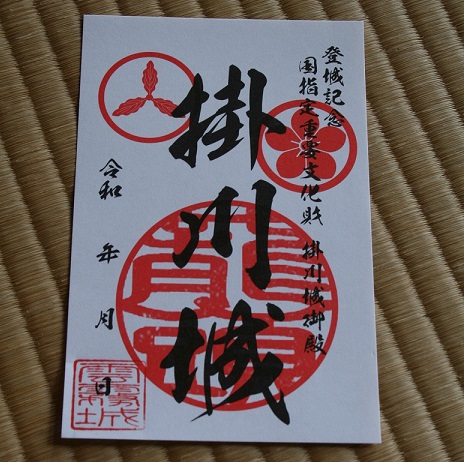
Touring the 100 most famous castles in Japan is popular among Japanese castle fans, but recently, collecting castle seals has also become a popular activity. You can obtain an official castle seal at the palace (for a fee). The largest seal from the “gojyoin” (red stamps issued at the castle) contains the Japanese characters “Ryuzu” taken from “Ryuzuyama”, which is the name of the castle where Kakegawa Castle is located.
Relax with a cup of tea at the Ninomaru Tea House

Feel free to take a break after touring the castle tower and palace. The Ninomaru Tea House in the park located in Kakegawa City is a traditional wooden sukiya-style building with an atmospheric tearoom that harmonizes with the surrounding landscape.
Here, visitors are served various types of tea such as matcha and Kakegawa-cha sencha while alternating between the seven schools of tea ceremony. When we visited in mid-February, we were able to drink hojicha tea from Kakegawa containing Setsubun beans and locally made sweets while enjoying the view of the Japanese garden in the hall. And even if you don’t know the proper etiquette, it’s not a problem at all. You will surely feel refreshed in the unique atmosphere away from everyday life. You will surely feel refreshed in the extraordinary atmosphere away from everyday life.
Enjoy delicious desserts at Takenomaru Cafe
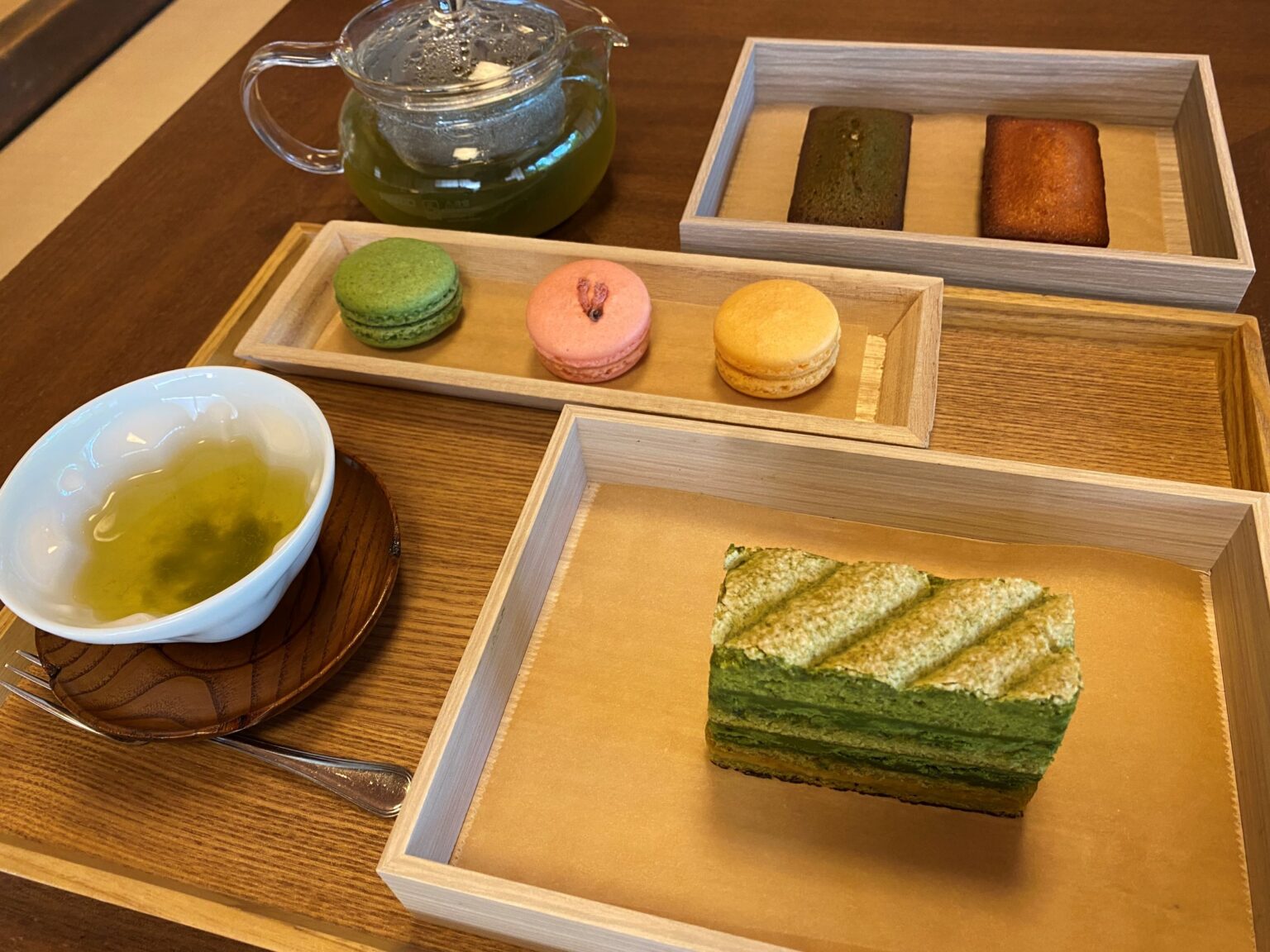
Takenomaru, which is located in the back side of the castle after leaving the park, is said to have been the residence of a chief vassal that was built by Kazutoyo Yamanouchi when he expanded the castle. In 1903, the Matsumoto family, who had been running a kudzu cloth wholesale store for generations in Nakamachi under Kakegawa Castle, built their main residence in Takenomaru, but when the family moved to Tokyo, the villa was donated to the then town of Kakegawa. After the war, it was used as a welfare facility for city employees, but in 2007, it was designated as a cultural asset by the city and underwent restoration work and is now open to the public.
The materials and designs of the fixtures and columns are stunning, and the beauty and techniques of the modern Japanese architecture are worth seeing. We recommend checking out the guest rooms located on the second floor of the detached building. The stained glass in the ranma (openwork screen above the sliding partitions between two rooms) is lovely, and you can enjoy a great view of Kakegawa Castle from the balcony. Today, it is open to the public as the Takenomaru Cafe, where visitors can enjoy Kakegawa Grand Hotel’s signature roll cakes and sweets. This is a great spot to stop by during a stroll.
Enjoy eating gourmet food, buying souvenirs and gathering information at “Kodawarippa”
You can find a wide range of teas and specialty items produced in Kakegawa at the tourist product center Kodawarippa near Kakegawa Castle.
At the Italian restaurant Pesaro located on the second floor, you can enjoy special dishes such as “Kakegawa-cha Genovese pasta” made with Kakegawa green tea and basil.
